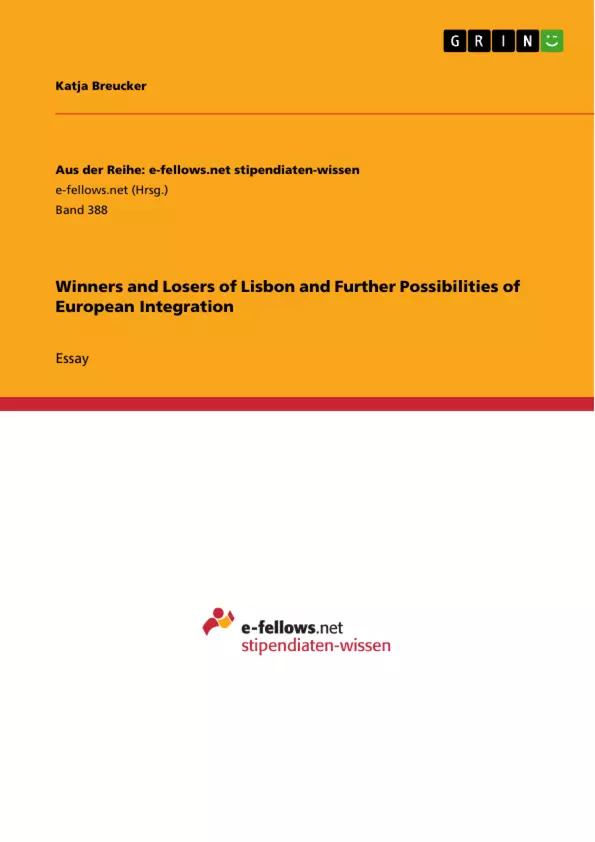The Lisbon Treaty, which came into force on the 1st December of 2009, is a major revision of the former treaties concerning the European Union. It changed a lot of the structures of the Union to which many citizens have grown used to. For example, the “pillar-structure” of the EU, which was implemented by the Maastricht Treaty, is gone. It is a big step towards a more (political) integrated and an “ever closer Union”. In the first part of this essay the changes the Lisbon Treaty introduced to
the political institutions will be discussed. The second part will show how integration might look like post-Lisbon and whether there will be further integration in form of further revisions of the treaty.
Inhaltsverzeichnis (Table of Contents)
- Introduction.
- Institutional Changes under the Lisbon Treaty.
- The European Parliament.
- European Council - Europe's most exclusive club.
- The Commission.
- European Integration post-Lisbon?
- Possibilities without changing the Treaties..
- Another revision of the Treaties?.
- Conclusion.........
Zielsetzung und Themenschwerpunkte (Objectives and Key Themes)
This essay examines the impact of the Lisbon Treaty on the institutions and future integration of the European Union. It analyzes the changes introduced to the European Parliament, the European Council, and the Commission, highlighting their potential implications for the EU's governance.
- Institutional changes under the Lisbon Treaty.
- The role of the European Parliament in the EU's decision-making process.
- The significance of the European Council and its president.
- The possibilities for further integration in the post-Lisbon era.
- The potential impact of further revisions of the EU treaties.
Zusammenfassung der Kapitel (Chapter Summaries)
- Introduction: The Lisbon Treaty, a major revision of the EU's founding treaties, introduced significant changes to its institutional structure, aiming for a more politically integrated Union.
- Institutional Changes under the Lisbon Treaty: The treaty significantly enhanced the European Parliament's power, particularly regarding the EU's budget and legislative process. The European Council was formally recognized as an institution, with a permanent president elected for a two-and-a-half-year term. The Commission, while losing some power, maintains its role as the executive branch of the EU.
- European Integration post-Lisbon?: The essay explores two potential paths for further integration: 1) utilizing existing treaty frameworks and 2) pursuing further revisions of the treaties. This section analyzes the feasibility and implications of both approaches.
Schlüsselwörter (Keywords)
This essay focuses on the European Union, Lisbon Treaty, institutional changes, European Parliament, European Council, Commission, European integration, treaty revisions, and democratic deficit.
- Quote paper
- Katja Breucker (Author), 2011, Winners and Losers of Lisbon and Further Possibilities of European Integration, Munich, GRIN Verlag, https://www.grin.com/document/190293



